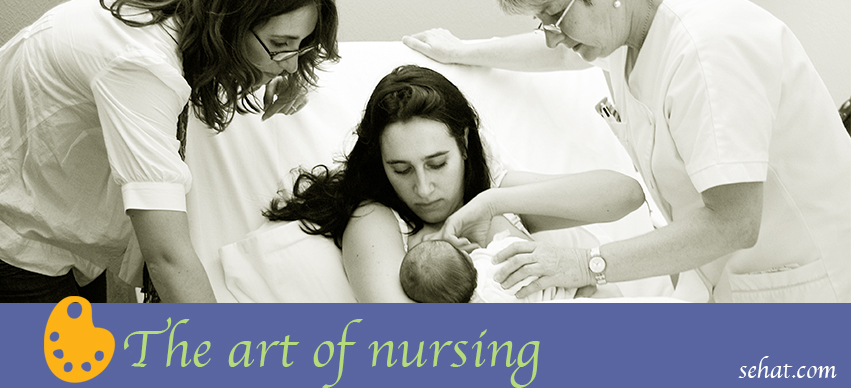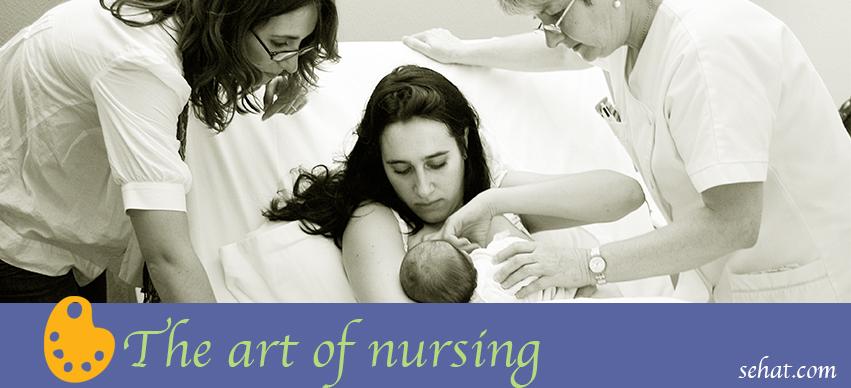Evolution of Prescription Refills: From In-Person to Online ..
6 Min Read


The benefits of breastfeeding are immense. Breast feeding has been emphasized and practiced from ages. Babies who are breastfed exclusively for 6 months are healthier, suffer fewer infections and are less prone to allergies than non breastfed infants.
A woman’s breast during lactation is a milk producing factory and a milk storage depot too. Milk is produced in the glands that are attached around the nipple with around 20 ejaculatory ducts. Whenever the baby sucks, the hormone oxytocin and prolactin raise and cause a milk let down reflex helping the mother to feed accurately.
Breastfeeding is best initiated in a quiet, calm and stress free environment. Every woman must be educated about positioning the baby, latching on and nipple care. You can attend antenatal and post delivery classes conducted in many hospitals. You must have adequate nutrition not only throughout pregnancy but after pregnancy as well during lactation. Make sure you consume an additional 550 kCals per day with 3 litres of water. Drink 500 ml of water every time you feed the baby. Add on a lot of fresh fruits and vegetables to your daily diet. Adequate rest, sleep is very important during lactation. Initiate a feed only when the baby is active and alert. It must be ready to feed and not be sleepy. Excessive cry, irritability in the child can be a sign of hunger and you can initiate demand feeding.
If your child has already been fed with formula feeds before initiating the breast milk due to any reason, feeding will generally be slow. You can stimulate the baby and make it alert by cheek strokes, tingling of feet, removing the clothing, etc. The right position to feed the infant is by holding the baby with support along the length of your forearm, while the other hand used to position the breast near the infant’s mouth. Always use a pillow to support your upper back and shoulders while feeding. Ensure that the nipple and areola are inside the baby’s mouth completely and nose points upwards towards your breasts. You must nurse the child for at least 10 to 15 minutes at each breast every time you feed. On demand feeding, whenever the child cries or initiates feeding must be practiced. After feeding, you must make sure that your breasts are empty by discarding remaining milk from the breast by expressing it out. Dry the nipple and areola for a few minutes before you put on your clothes. The milk contains immunoglobulin, which prevent cracking and dryness of the nipple and prevents infections. Do not use lotions, creams over the breast as it can lead to clogging and reduced milk secretion and hamper the taste which can be unappealing to your baby. There are lactation specialists available to help you with the right techniques of breastfeeding.
Challenges that you need to overcome while breastfeeding are plenty. There is an imbalance in the supply and demand of milk especially during initiation of feeding and after 6 months when the baby grows. Soon after the delivery, that is in the first 3 days, there is reduced milk production. Avoid bottle feeds as it creates nipple confusion. Instead go on trying to feed the baby with proper latching techniques. If your baby is nursing every 2 to 3 hours and you change around 5 diapers a day, supplementation with additional feeds is not needed.
In case your breasts get engorged, frequent nursing, gentle breast massage and right feeding techniques with frequent emptying of the breast is needed. You can take a painkiller like Paracetamol or NSAID.
The growth of baby increases at 2 to 3 weeks, where you may feel reduced milk supply, make sure you feel the child frequently. This may be experienced again at 6 weeks .
If your child refuses to nurse suddenly, get the baby examined to rule out ear infections, oral thrush or a diaper rash. Your eating habits can adversely affect the baby as well. Chocolates, citrus fruits, onions can lead to a change of taste in milk and sudden refusal to feed. Garlic is considered to be pleasing to the infant’s taste buds.
In cases of breast engorgement not responding to routine measures, see a doctor if you develop fever. If left untreated, you may end up with a breast abscess. You can also develop a milder form of infection called mastitis, seen in 10 percent of nursing mothers. This mostly develops due to missed or irregular feeding or cracked nipples. Your breasts may appear red, firm to feel and painful to touch.
A course of antibiotics and medications to reduce the inflammation may be prescribed. An abscess may need incision and drainage. Make sure you do not withhold breastfeeding if you have mastitis or even if you are on any medications like antibiotics as withholding breastfeeding can lead to breast engorgement.
Working mothers can now successfully feed their babies with the help of breast pumps. Manual and electric pumps are available. Electric pumps express milk faster and are easy to use with the advantage of lesser infection rates.
Avoid medications like bromocriptine, lithium, methotrexate and other cytotoxic drugs. Drugs of abuse like cocaine, alcohol, angel dust or phencyclidine must be stopped. Aspirin and phenobarbitone must be used with caution. Avoid antidepressant, antipsychotics and anxiolytics.
In case you are on any medicines for a health issue, consume them after you finish feeding the child.
In case of herpes infection, proper hand washing and keep the baby covered and unexposed to the lesions. Hepatitis B is not a contraindication for breastfeeding if the baby has received the vaccination against Hepatitis B. HIV infection is a contraindication to breastfeeding. If you are having tuberculosis, withhold breastfeeding until 2 to 3 weeks of ATT is completed.
In case of flat nipples, use a breast shell or nipple shield to evert it. You can also apply ice just before breast feeding which can cause the nipple to become erect and assist in easy latching on.
You must grasp the entire areola between the thumb and forefingers and apply pressure on the chest wall to evert the nipple.
Best time to wean off the child from the best is between 1 to 2 years of age. Do not continue only breast feeding after one year, and always supplement with cow’s milk to avoid rickets and vitamin D deficiency.
As the baby grows and enjoys independence, it may lose its interest in breastfeeding. Weaning should be slow, substituting good nutritional feeds is compulsory.
You can slowly bring down the frequency of feeds. Do not wean suddenly as this can lead to breast engorgement and leave the baby also irritable. You may end up with an abscess of the breasts as well.
If you have to suddenly discontinue feeding, you must always consult your doctor for a plan and may need breast binders and analgesics for 3 days .
Medications like bromocriptine and vitamin B 6 are helpful in this regard. However, hypotension, headache, nausea, weakness are commonly encountered with these medications.
You are always at a benefit when you feed your baby. It reduces your cholesterol levels, helps in reducing weight and keeps you active. Hence always nurse your baby for an emotional bond for the rest of your life.